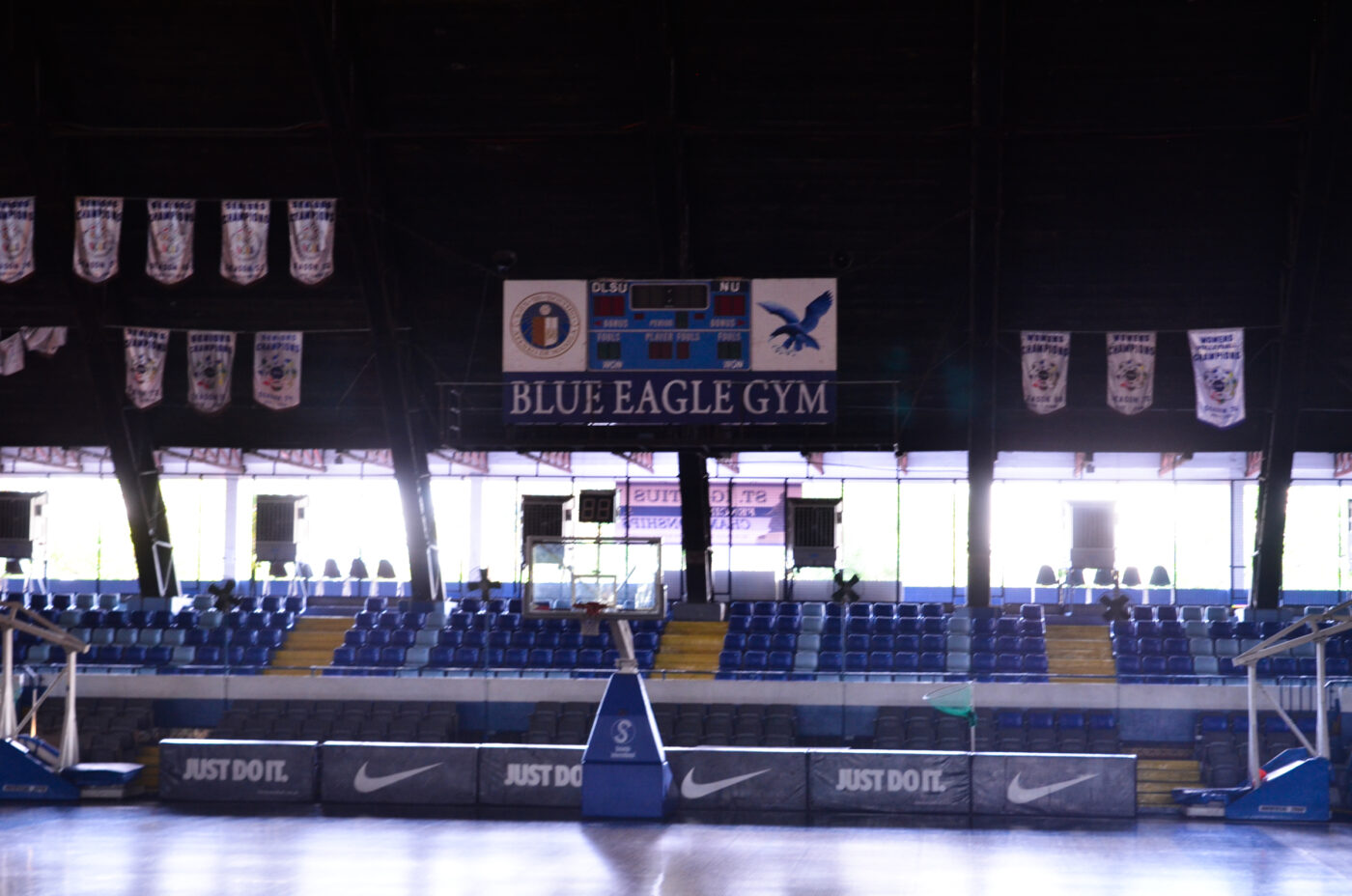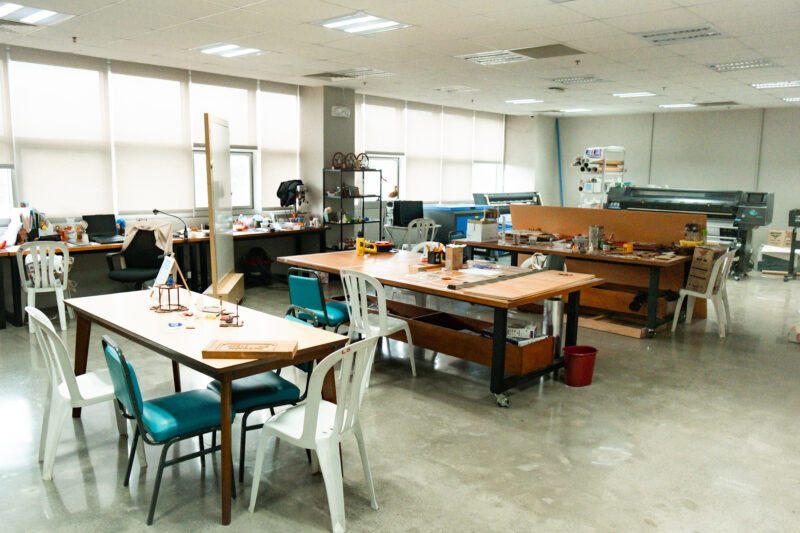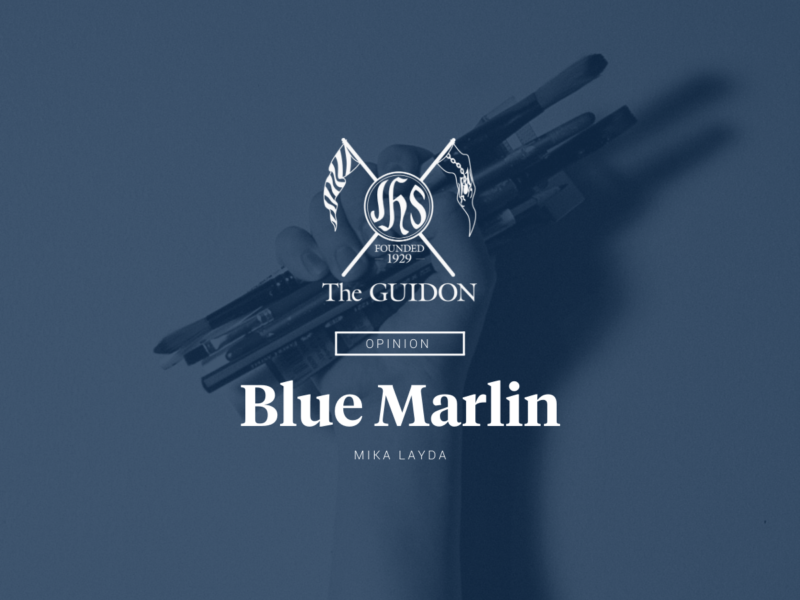CELEBRATING ITS 65th anniversary last December, the Blue Eagle Gym has made its home in Loyola Heights since 1949. The gym has cemented itself as a true icon of the Ateneo de Manila University, transcending its original purpose as a venue for basketball games by forming a legacy remembered by Ateneans of generations past.
Stacked with memories
Jojo Gamboa (BS MGT ‘81) is one such former Atenean athlete who has gone through the halls of the beloved gym. He remembers a time when the Blue Eagle Gym was one of the few venues that hosted collegiate basketball games—long before the likes of the Mall of Asia Arena and the Filoil Flying V Arena dominated the scene.
However, before the Ateneo officially made the switch to the University Athletics Association of the Philippines (UAAP) in 1978, the gym was a witness to the National Collegiate Athletics Association (NCAA) tournament that was infamous for holding very physical and violent games. “Back then, it was chaotic. If there was a bad call, fans would pack batteries, spark plugs, and coins [to throw at the referees]. It was uncontrollable,” Gamboa says in a mix of English and Filipino.
Rather than be intimidated by such a sight, Gamboa instead regards the Blue Eagle Gym as his first inspiration as an impressionable young boy. “The ‘69 [Men’s Basketball team] were champions, so all their players were my idols. I said, ‘Someday, I want to play here.’ Not all people can play on that court,” he shares in a mix of English and Filipino. Gamboa would later on use this motivation to earn himself a spot as a point guard for the 1980 Blue Eagles team.
Ricky Palou (BS MGT ‘71), a member of that same 1969 championship team, still remembers that day. Playing the deciding match of the championship, the home team had just lost top scorers Chito Afable and Francis Arnaiz, who were both thrown out of the game due to unnecessary roughness. Despite the odds that were stacked against his team, Palou proudly recalls that it was the bench players who stepped up for the Blue and White in their direst moment, winning the championship for the Ateneo right inside the Blue Eagle Gym.
More than a basketball court
But other than the rough physical activities that took place in the gym, it was also utilized for other activities.
During the ‘60s and ‘70s, the Blue Eagle Gym was leased to Emerito Ramos as a commercial property and was subsequently renamed as the Loyola Center. It was during this time that the building was used not only as a sports venue, but also as concert grounds for live performances of local and foreign artists alike. The gym even acted as the site of the 1965 Visit of Atenean Senator Raul Manglapus (AB ‘39) and Senator Emmanuel Pelaez (AB EC ’61), who were then running for president and vice President respectively.
The gym was eventually renamed back to its current title when Ramos’ lease had expired. According to Palou, however, the main reason why Ramos would give the rights back to the Ateneo was because the Loyola Center had become an economic liability. “It was costing the university more to maintain it because of its age. In fact, at one time, they were thinking of just closing it down,” he shares.
It was then that Palou, who is now the University Athletics Office director in charge of managing the gym, decided to refurbish the gym and restore it to its original eminence. A wave of construction soon followed under Palou’s supervision, the main focus of which was the addition of a new flooring that was used in the National Basketball Association All-Star game in San Francisco.
The overhaul of the gym in the late 1990s coincided with a newfound commitment by the school in developing its athletics. Its decision to prioritize the sports hosted by the UAAP has translated into the gym serving as the training venue for several varsity teams and clubs. Additionally, the gym also features the Athletes Study Hall and Athletes Quarters hidden inside its premises.
A monument to school spirit
According to Leadership and Strategy Professor Ramon Mayuga (AB EC ‘71), himself a contributing writer for The GUIDON Sports section in the ‘60s and ‘70s, the gym was then considered the symbol of Ateneo’s massive size and unity as a university—this is true to this day. For him, the Blue Eagle Gym as an icon serves to unify Ateneans of all ages and to intensify our passion for the school. “The common heritage of all Ateneans reminds us all about our tradition of excellence, school spirit and sportsmanship,” he says.
The Blue Eagle Gym maintains a history and legacy that resonates differently with each generation of Ateneans. Some reminisce and see it as a memento of past glory days, while others may see it as testament to the Ateneo identity.
For Gamboa, however, the importance of the Blue Eagle Gym to him is personal. “Ang ganda talaga kasi. Kapag sanay ka sa semento tapos kahoy bigla, iba ‘yon. (The gym was just beautiful. If you were used to cement courts, then you use wooden ones, it’s different).”
For the current generation, multiple varsity teams in the Ateneo use the facility to improve their skills. Having a sound mind and a sound body is key for these athletes, and whatever tournament results they garner are a reflection of the hard work and sacrifices put up inside the historic gym.








I remember my wonderful Judo PE classes at this gym many, many years ago!